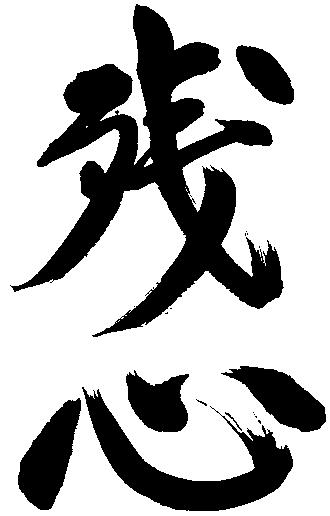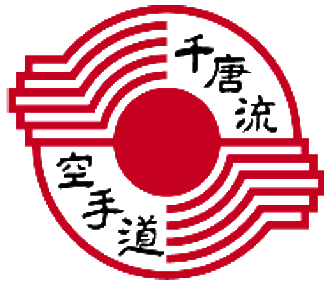 |

ZANSHIN
Ken Roper
September 2003 |
|
In this treatise on Zanshin, I will touch on many
concepts that are intertwined with the concept of Zanshin and perhaps
shed some light on the subject. The term Zanshin taken literally
means ‘left over or remaining mind, heart, or spirit’. |
|
I would like to begin with the term Isshin which means
‘one mind’. When a karateka performs a technique such as oi-zuki and
completely focusses their mind on delivering that one attack., then all
other thoughts have been pushed out of their mind and there is a time lapse
before their mind is aware of what is going on around them. They are in a
kusushi frame of mind. If the oi-zuki does not succeed in defeating the
opponent, then the karateka is totally unprepared to for a counter-attack by
the opponent. Their mind has remained focussed on the oi-zuki even after it
has been delivered. A good sensei will begin teaching students very early in
their martial arts training the skills of go-no-sen where the
karateka must not exhibit ‘Isshin’ (one mind) or ‘Shishin’
(stopped mind) if they hope to demonstrate go-no-sen timing. Very
early on karateka must also be taught ‘Randori’ properly so that one
can alternately attack and defend without mental lapses where they say;
"what do I do next?" |
|
Karateka must also be taught ‘ Mushin’ (without heart or empty
mind). This mental state does not let unnecessary thoughts come into their
mind before, during or after a technique has been performed. The opposite of
"Mushin" might be termed day-dreaming. |
|
As karateka advance in their training, they should be able to
experience "Fudoshin" (immovable or unshakeable mind). In this mental
state the mind is not static but in fact, just the opposite, it is
constantly moving. In "Fudoshin", when a karateka has performed a
technique, their mind does not remain focussed on that technique (mind in
"Isshin"). Nor is the karateka day-dreaming (the opposite of "Mushin").
Instead the mind, in a "Fudoshin" state, is alert and ready to
continue to attack or defend. In this mental state we could use the term
"mizu no kokora" (mind like water). The karateka must keep
calm and the mind is undisturbed like a pool of quiet water. |
|
Another advanced mental state is "Heijoshin" (even or ordinary
mind). This mental state allows the karateka to maintain an even, cool mind
under difficult conditions. A karateka that exhibits "Heijoshin" is
an expert and also exhibits "Kan" (the ability not to be fooled by
deceptions such as voice or body fakes). The mind can remain ordinary, even
during combat. |
|
"Fudoshin" and "Heijoshin" are much the same as "Zanshin".
"Zanshin" is the process of returning the mind to a normal state
after performing or defending from an attack. It is a mental state in which
one is totally aware of one’s surroundings. One who exhibits "Zanshin"
demonstrates both a mental and physical dominance of an opponent. The
karateka must exhibit "Metsuke" (eye control) and "Kiai" (focussed
energy). The karateka must have "Ki Musubi" in order to have "Zanshin".
"Ki Musubi" is the process of continually unfolding connection,
direction, and control due to the extension of one’s "Ki".
|
|
As Yamashita Yoshiaki once said "Technique and mind are just like the
front and back of one’s mind, they are two sides of the same thing."
Therefore to complement the mental state a karateka must exhibit proper
physical attributes as well. A karateka must have proper "Shisei"
(posture) and "Ma-ai" ( engagement distance) to completely dominate
an opponent. "Zanshin" encompasses both a physical and mental
component. Both components must be in evidence before a karateka is able to
exhibit true "Zanshin". |

